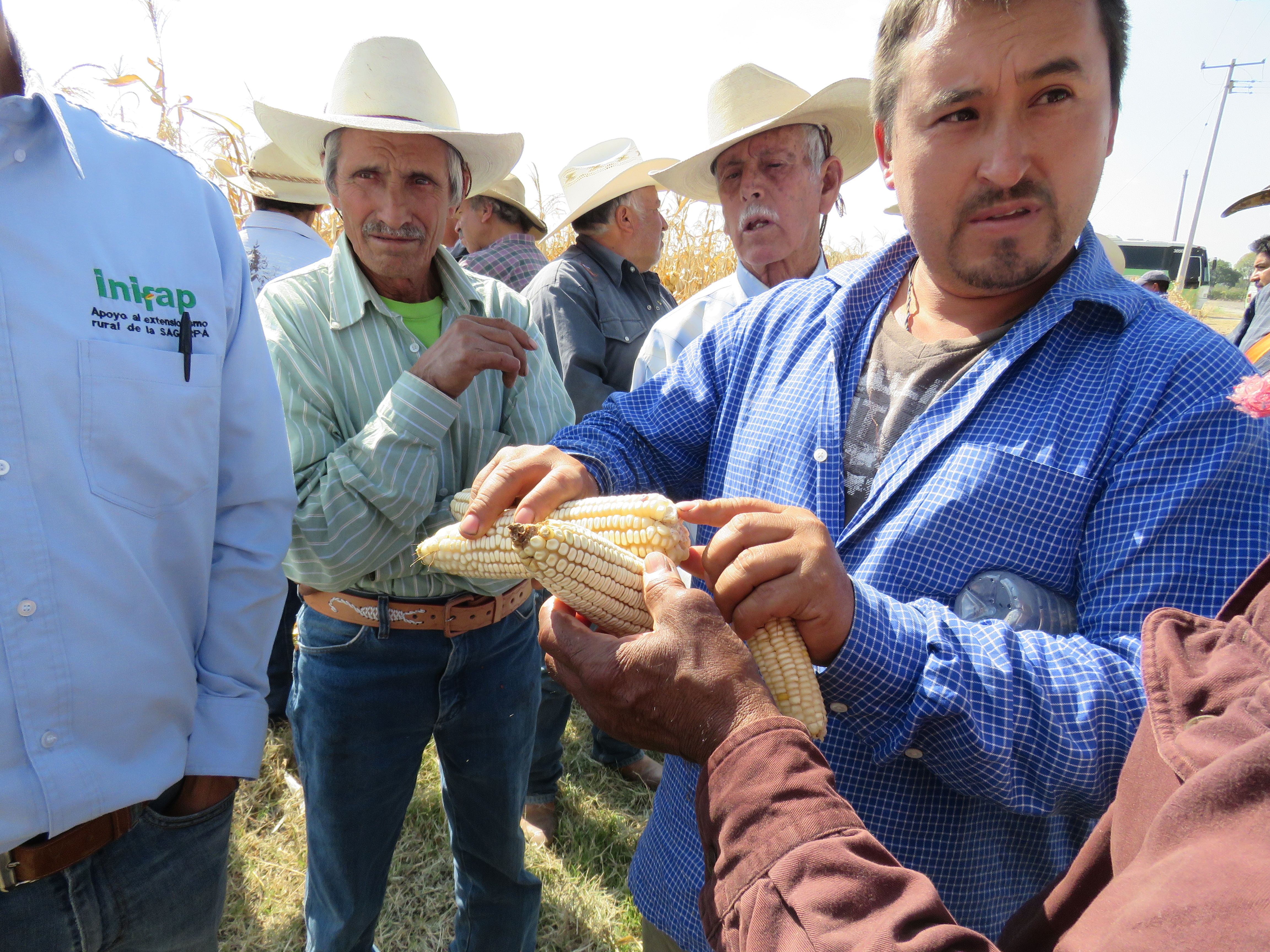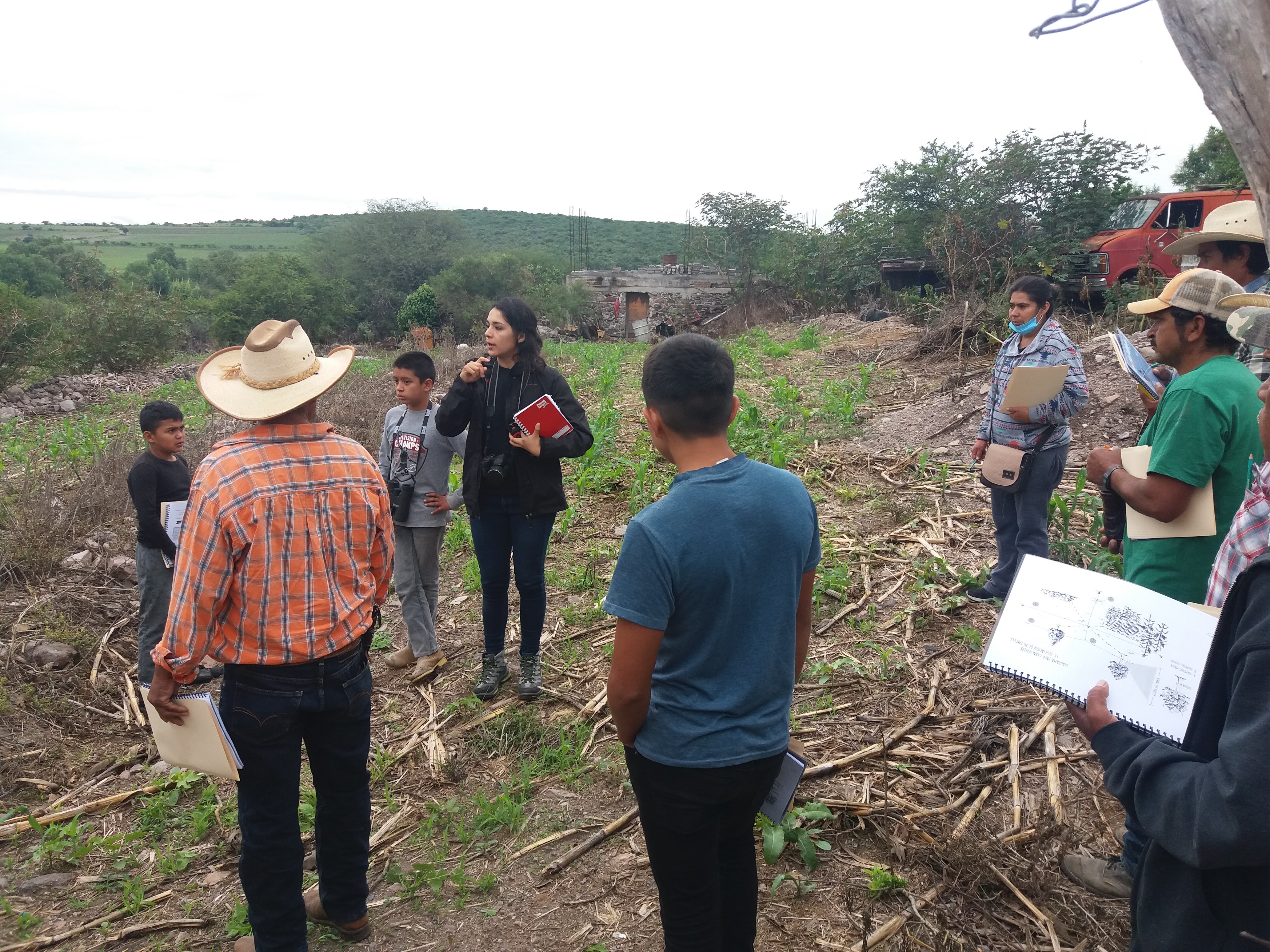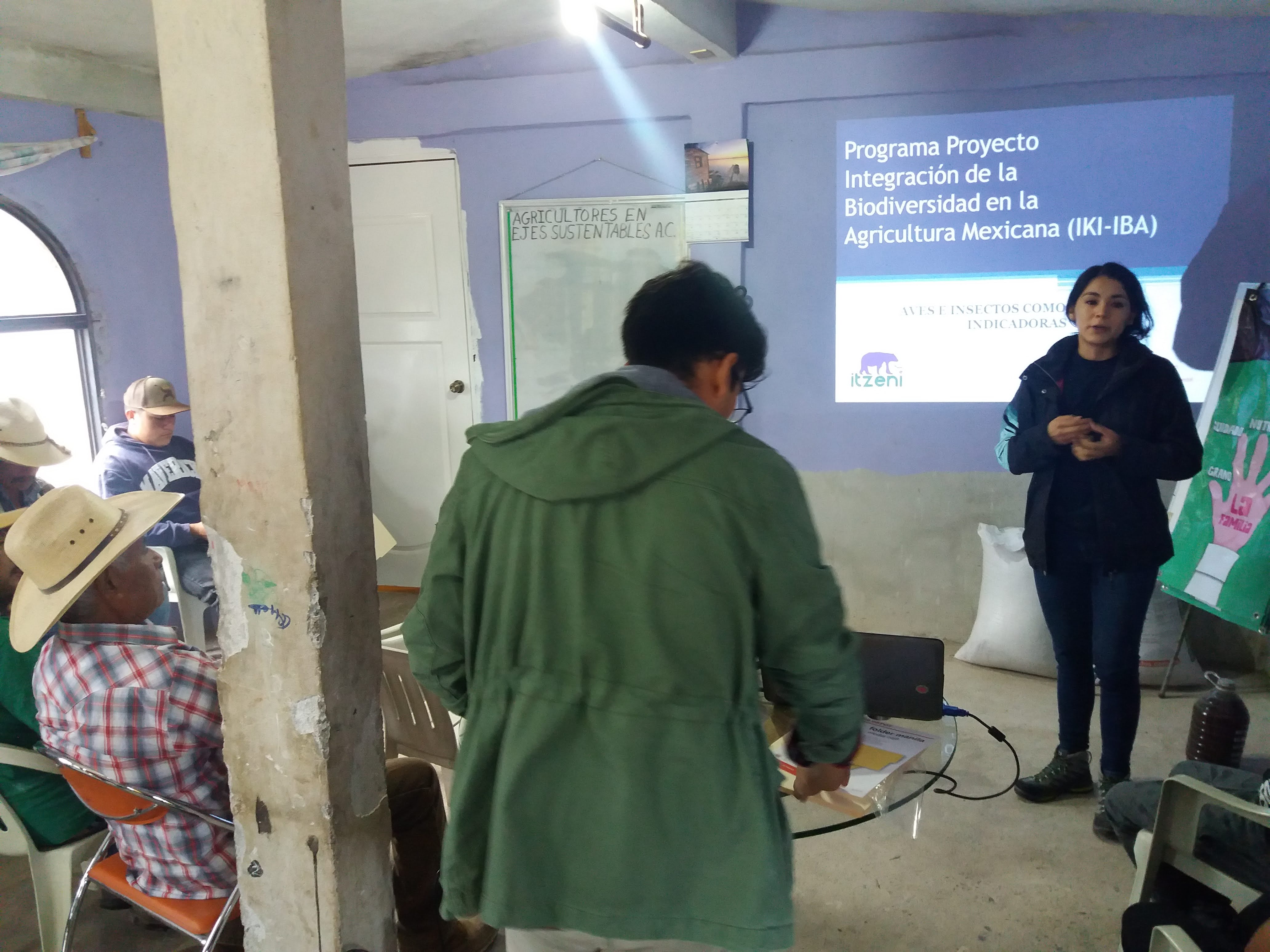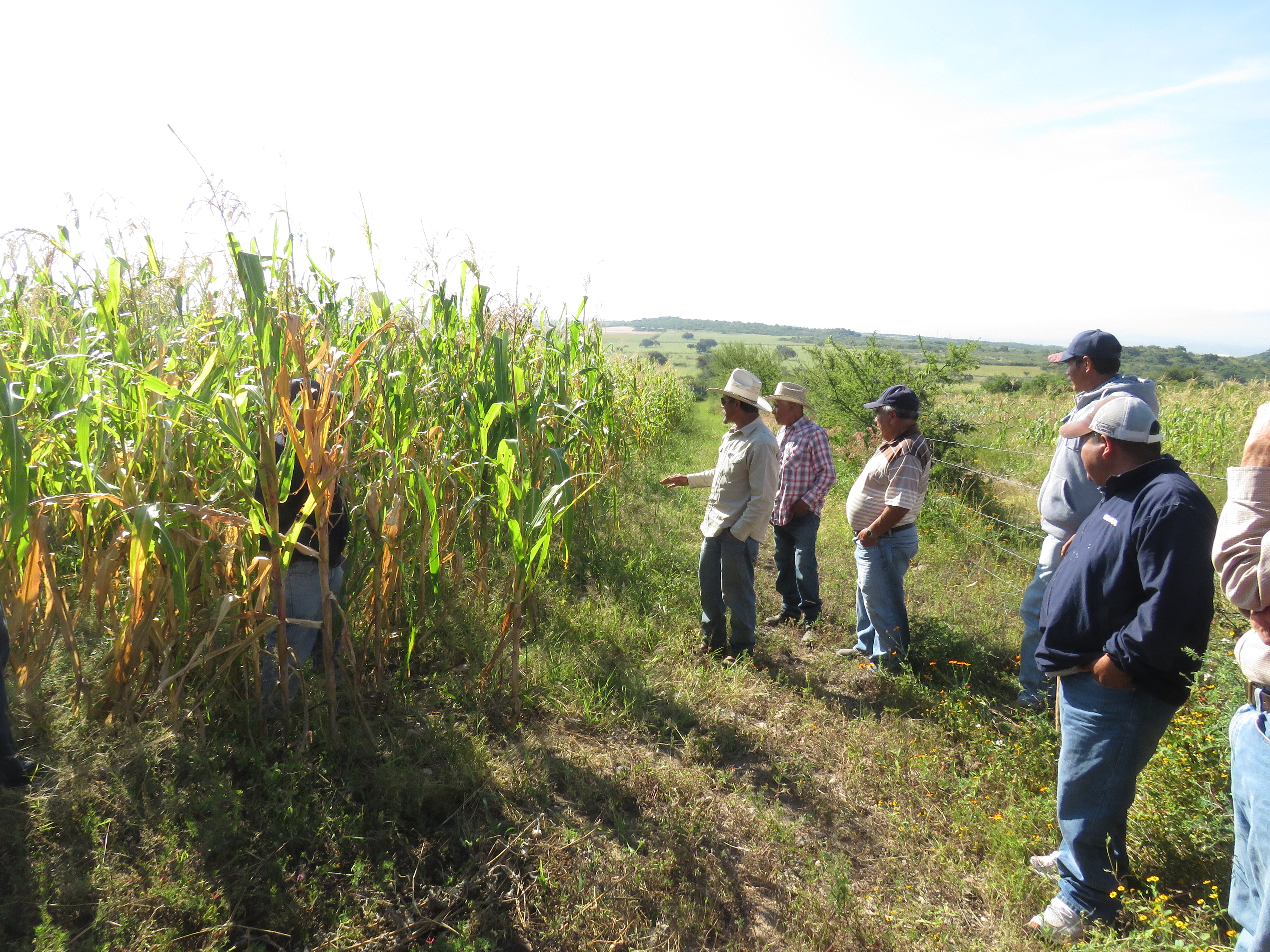




In 2013, the National System of Phytogenetic Resources for Food and Agriculture (SINAREFI) together with the National Institute of Forestry, Agricultural and Livestock Research (INIFAP) initiated a monthly training program for small producers in the community of Ojo Zarco, in the Municipality of Apaseo el Grande, Guanajuato. A community seed bank was organized and a group of producers who are custodians of criollo corn seeds was formed.
Initially, many producers attended the training sessions in the hope of receiving economic support, but when Dr. Aguirre of INIFAP proposed that each producer conduct experiments to learn about the best conditions for his plot, a group of the most interested producers in the area began to consolidate. The experiments compared the "traditional" sowing with the one that applied a change of practice, with respect to data on grain production and shearing. The results in the color and size of the plants encouraged the producers, but the results in productivity were decisive.
The training process is very slow but effective in the semiarid rainfed agriculture zone. It takes 6 to 7 years to obtain good results when only small farmers have their own resources.
- The training program carried out by SINAREFI and INIFAP allowed producers to understand the importance of the 5 Axes. Although the program did not last more than 3 years, the producers were able to continue replicating the good practices learned.
- The associative capacity of small producers and their ability to experiment on their own plots.
- The involvement of young people from the community in monitoring actions.
- The use of digital tools has been fundamental for the good implementation of cooperative projects, but even more so for not stopping activities during the pandemic period.
- The continuous technical accompaniment of INIFAP personnel gave a very important support to the development of the 5 axes of sustainability that now make up the production model adopted by the producers of Apaseo el Grande.